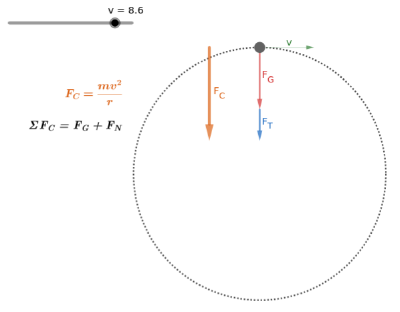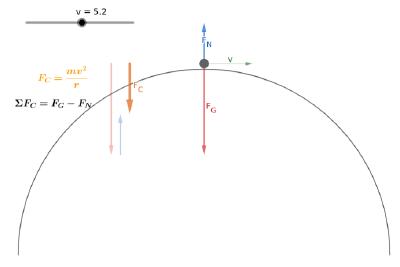Circular Motion GeoGebra Animations
This pair of GeoGebra animations is designed to show that there are two ingredients to circular motion: centripetal force and forward motion. If one or the other ingredient is missing, the motion will diverge from circular.
Minimum Speed
This animation shows an object tied to a rope being swung in a vertical circle. At the top of the circle, the net centripetal force needs to point in the downward direction. Gravity provides much of this force, and any remaining force is provided by the force of tension.
As the object slows down, it needs less centripetal force; therefore, there can be less tension. However, the force of gravity is fixed since the object has a fixed mass. Once you get going slow enough, gravity provides more downward force than necessary. This is now a case in which the centripetal force dominates the forward motion. The result is that the object tends to move closer to the center and the rope goes slack.

Maximum Speed
This animation shows an object rolling over a semicircular hill. At the top of the hill, the net centripetal force still needs to point down. Gravity provides this centripetal force. When the object is moving slow, it does not need as much centripetal force, so the normal force cancels out some of the gravity to keep the object moving in a circle.
However, there comes a point when the object is moving fast enough that it needs more centripetal force than gravity can provide. Since there is no other downward force other than gravity, it is impossible for the object to get enough centripetal force to stay moving in a circle. The result is that forward motion dominates the centripetal force and the object moves away from the center.
